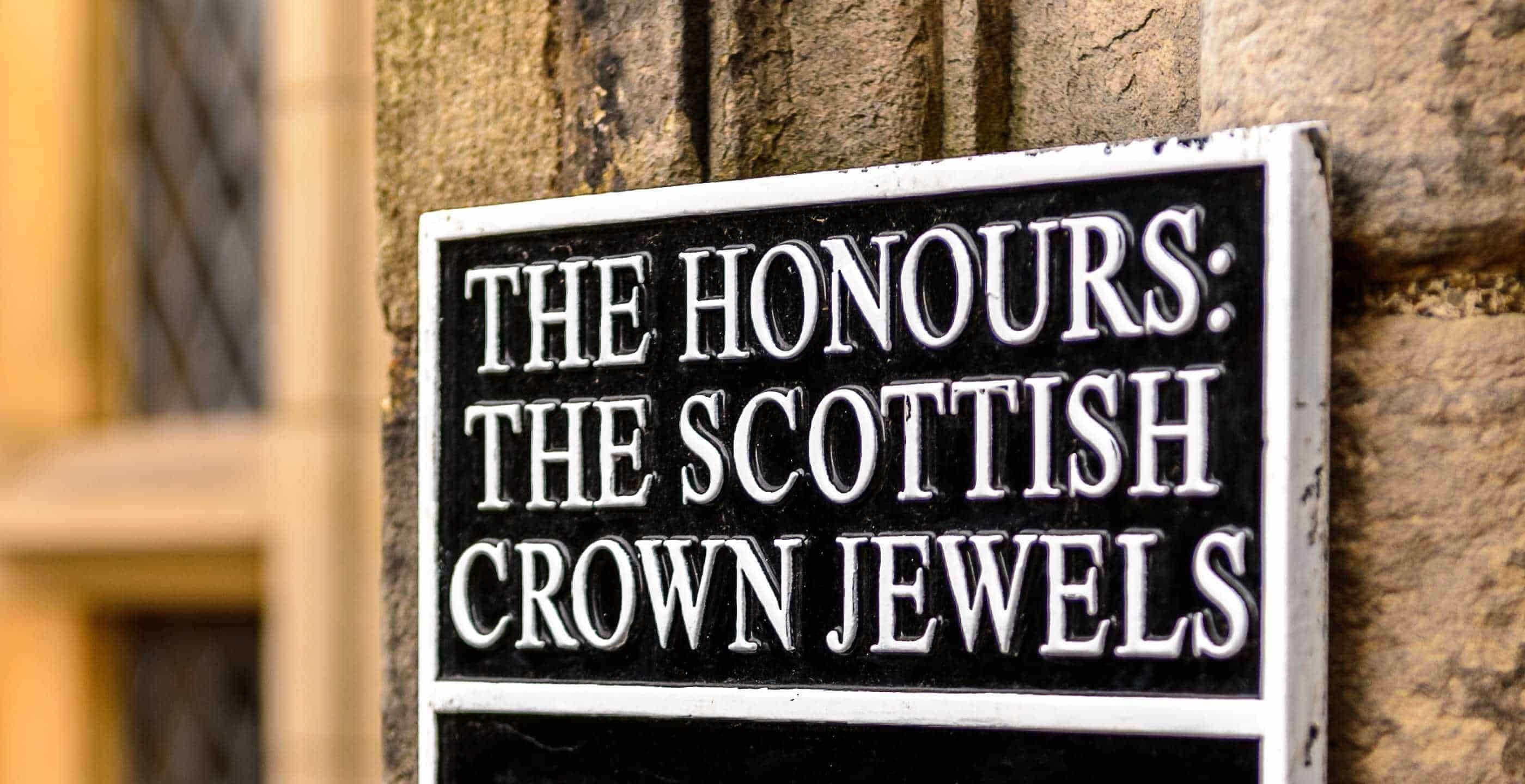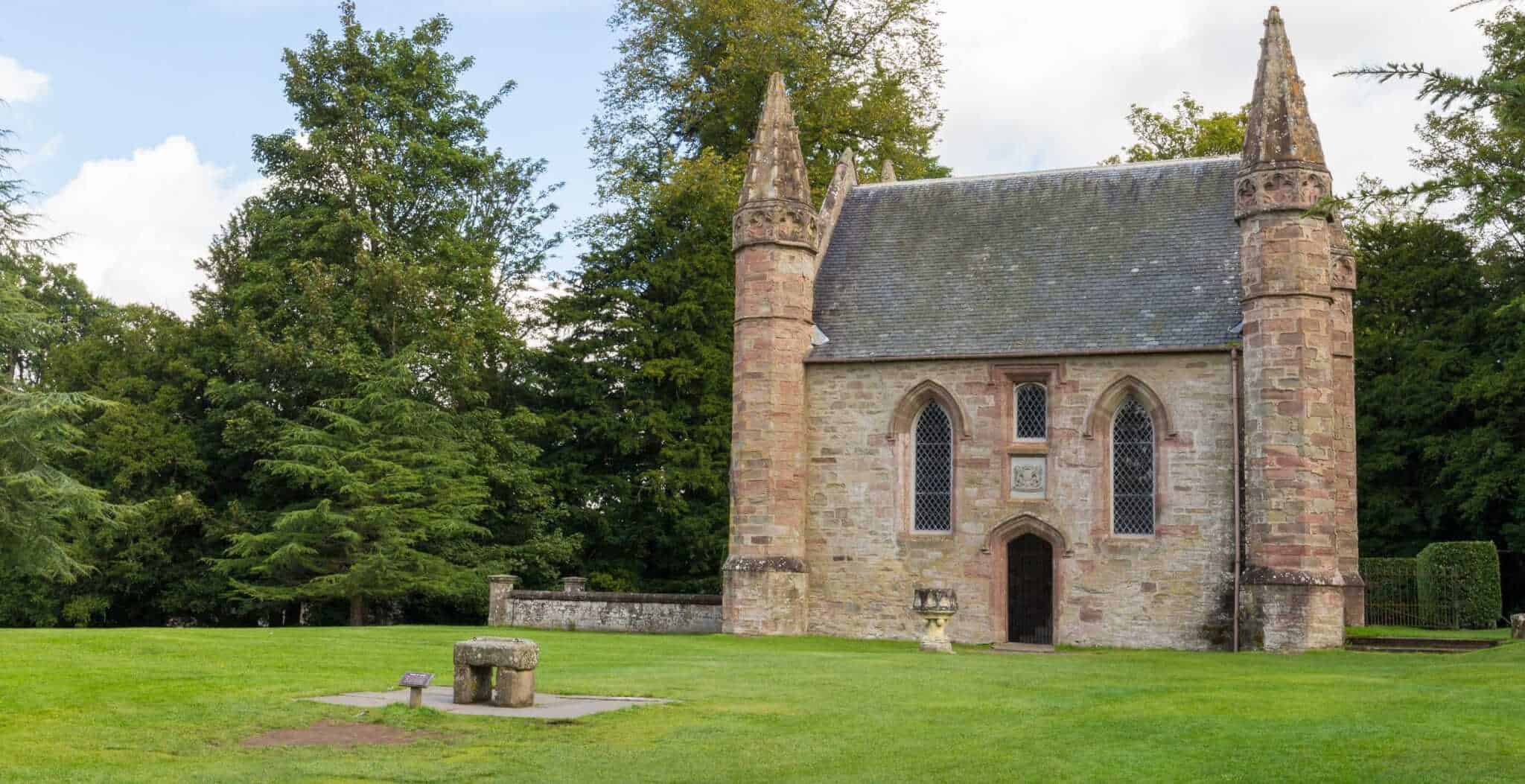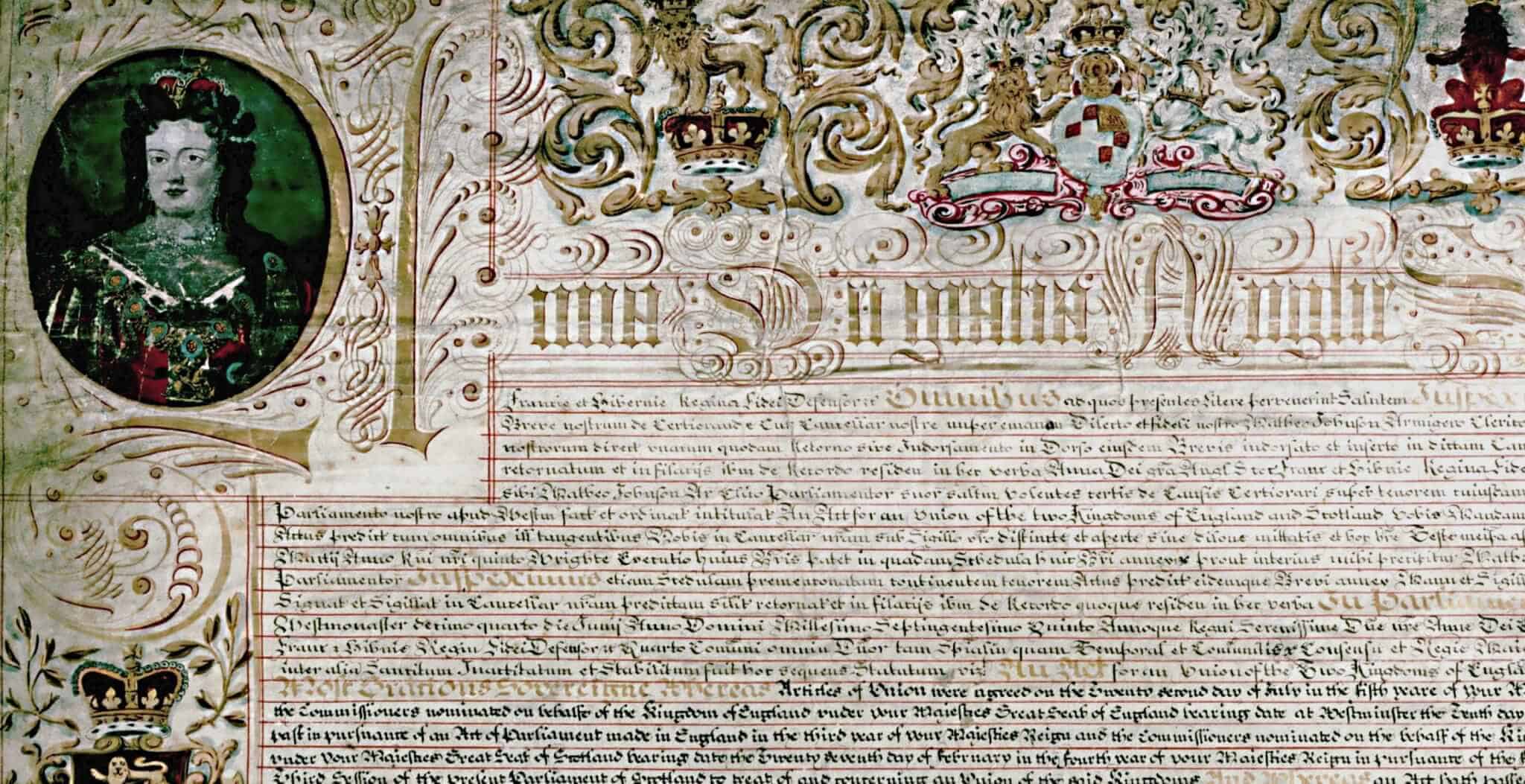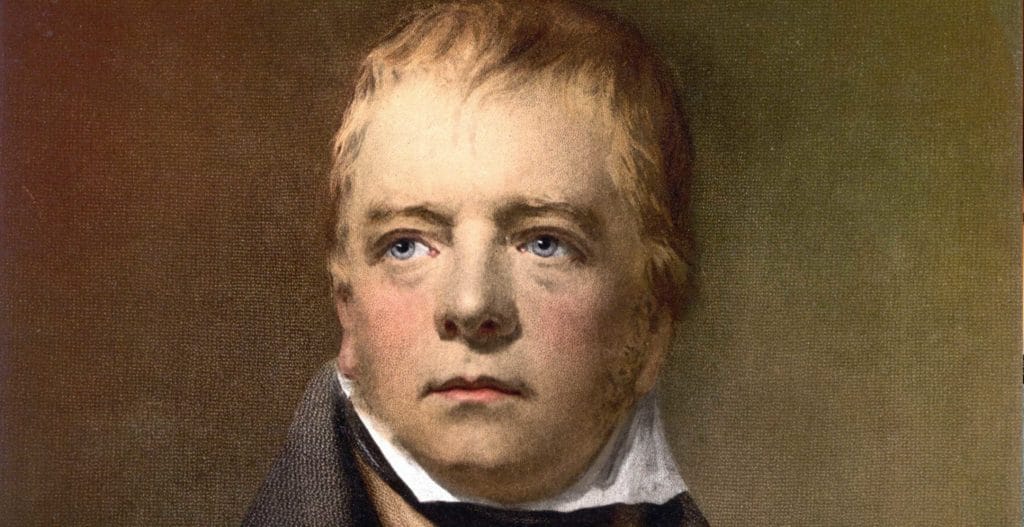The Scottish ‘Honours’ are the oldest Royal Regalia in Britain and can be seen in Edinburgh Castle.
The ‘Honours’ were first used together at the coronation of the nine-month-old Mary, Queen of Scots in 1543, and subsequently at the coronations of her infant son James VI (and I of England) at Stirling in 1567 and her grandson Charles I in 1633 at the Palace of Holyroodhouse.
The Crown almost certainly dates from before 1540 when it was remodelled by order of James V. It was last worn at the coronation of Charles II at Scone in 1651.
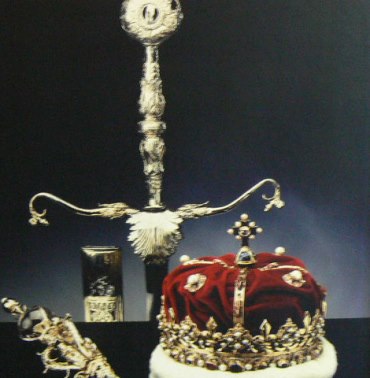
Made of solid silver, the Sceptre is surmounted with three figures supporting a crystal globe, a cut and polished rock crystal, with a Scottish pearl on top. A gift from the Pope, possibly given by Innocent Vlll to James IV in 1494, it was remodelled by James V who even added his initials to the sceptre.
The Sword of State was presented to James IV in 1507 by Pope Julius II and has a blade a metre long.
Also displayed with the Crown Jewels in Edinburgh Castle is the Stone of Destiny, returned to Scotland after 700 years in England. Taken by Edward I in 1296, the Stone is a symbol of Scotland’s nationhood. It was the coronation stone for Scottish kings such as MacBeth. Legend has it that it was also “Jacob’s Pillow” on which he dreamed of the ladder of angels from earth to heaven.
The story of the Scottish regalia is stranger than fiction. First of all they were hidden to stop them falling into English hands. Then, following the Treaty of Union in 1707, the ancient crown jewels of Scotland disappeared for a century. Rumours circulated that the English had removed them to London. However it was one of Scotland’s most celebrated literary sons who rediscovered them…
The regalia of Scotland – the ‘Honours of Scotland’ – were among the most potent symbols of Scottish nationhood. During Cromwell‘s occupation of Scotland in the 1650s, the Honours were one of his most sought after targets.
Charles I, King of both Scotland and England, was executed in 1649 by Oliver Cromwell. The following year his son (later Charles II) arrived in north east Scotland in a bid to retake the two kingdoms.
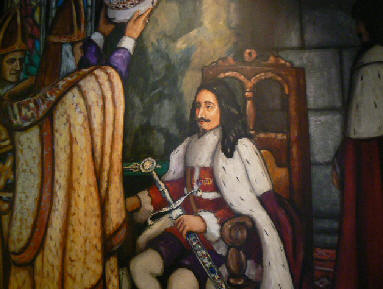
Oliver Cromwell invaded Scotland. In some haste therefore, Charles II was crowned at Scone, but the ‘Honours’ could not be returned to Edinburgh Castle as it had now fallen to Cromwell’s army. The English crown jewels had already been destroyed by Cromwell and the ‘Honours’ of Scotland, symbols of monarchy, were next on his list. His army was fast advancing Scone and the King ordered the Earl Marischal to take the ‘Honours’ and many of his personal papers to safety at Dunnottar Castle. Dunnottar Castle was the home of the Earl Marischal of Scotland, once one of the most powerful families in the land. The Earl Marischal oversaw all ceremonial activities in the Scottish Court, including coronations.
It was not long before Dunnottar was under siege and a scratch garrison of 70 men held out for eight months against the invading forces. Soon it became obvious that the castle was going to fall and something had to be done to save the ‘Honours’. The crown, sceptre and sword were lowered over the seaward side of the Castle and received by a serving woman, there on pretence of gathering seaweed. She took them to the church at Kinneff, a village several miles to the south where at first they were hidden at the bottom of the bed in the minister’s house until he could bury them more securely in the church itself.
The minister, Rev. James Grainger and his wife wrapped the jewels in linen cloths and buried them at night under the clay floor of the church. Every three months the minister and his wife would dig up the Regalia at night to air them to preserve them from damp and injury. The Honours remained hidden for nine years during the Commonwealth while the English army searched for them in vain.
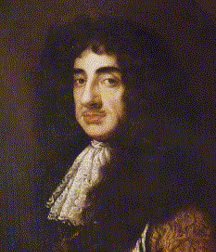
At the Restoration in 1660 the ‘Honours’ were returned to Charles II and placed in Edinburgh Castle. In the absence of a resident sovereign, the regalia were taken to sittings of the Parliament in Edinburgh to signify the sovereign’s presence and his or her consent to the passing of each Act. When the Scottish Parliament was dissolved in 1707, they were locked in a chest in the Crown Room at Edinburgh Castle where they remained, forgotten.
Of all Scots who have formed their countrymen and women’s perceptions of Scottish history, Sir Walter Scott was one of the most important. His romantic view of the Scottish past helped to lead to the ‘discovery’ of Scotland as a popular tourist destination.
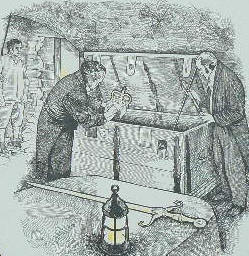
The Prince Regent (later George IV) was so impressed by Sir Walter Scott’s work that in 1818 he gave him permission to search Edinburgh Castle for the Royal Scottish regalia. The searchers eventually found them in the little strong room at Edinburgh Castle locked in an oak chest, covered with linen cloths, exactly as they had been left after the Union on 7 March 1707. They were put on display on 26th May 1819 and have been on view ever since in Edinburgh Castle, where thousands come to see them each year.
